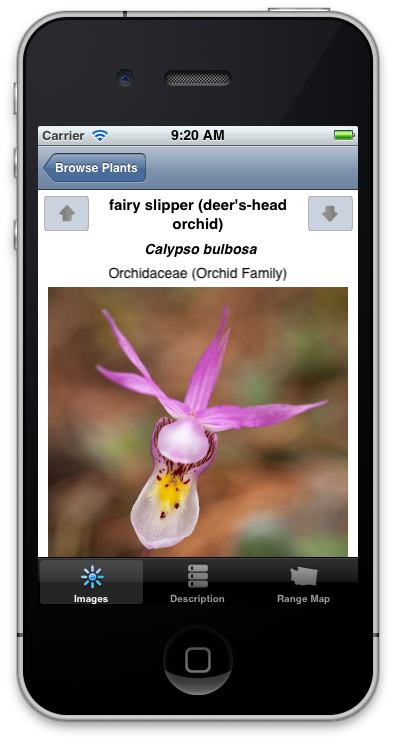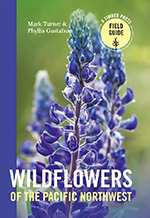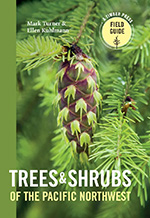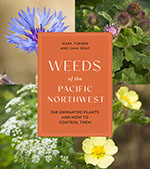Washington Wildflowers Smartphone App
If you love the images and information on this website but wish you could have them in the field ... now you can. Washington Wildflowers, the smartphone app, lets you take 870 species from Washington state into the field with you. There's extensive search capability, 3 or 4 photos for each plant, descriptions, and range maps. Once installed on your phone or tablet there's no need for a net connection. It's all self-contained. Read on for the details and purchase links for iOS, Android, and Kindle Fire.

University of Washington Herbarium at the Burke Museum, the authors of Wildflowers of the Pacific Northwest, and High Country Apps have partnered to produce the new Washington Wildflowers plant identification app for iOS and Android devices. The app provides images, species descriptions, range maps, bloom period, and technical descriptions for more than 850 common wildflowers, shrubs, and vines that occur in Washington and adjacent areas of British Columbia, Idaho, and Oregon. The majority of species included are native, but introduced species common to the region are covered as well in order to expand the usefulness of this resource. Most of the 850 species are illustrated with three photographs, usually a blossom detail, the entire plant, and often a habitat view. I made almost all of the photographs, the exceptions being a few plants I have yet to find.
Once downloaded and installed, the app does not need an internet or cellphone connection to run so you can use it no matter how remote your wanderings take you.
The app is available by following one of these links:
Android platform through Google Play
Apple iOS platform through iTunes
The number of species covered and wealth of information included sets a new standard for wildflower identification apps. Though primarily designed for amateur enthusiasts, Washington Wildflowers has a breadth of content and depth of information that will appeal to more experienced botanists too. Users can browse the species list by common or scientific name (and even by family!) to locate a plant and access the related information. However, most users will likely use the identification key that is the core of the app to identify a plant of interest.

The key’s user-friendly interface is broken down into nine simple categories: growth habit (e.g., wildflower, shrub, vine), flower color, month of year, geographic region, habitat, leaf arrangement, leaf type, duration (annual, biennial, perennial), and origin (native or introduced). Select choices in as many or as few categories as you wish. As you do so, the number of species found is displayed at the top of the page. Once done selecting, the tap of a button returns thumbnail images and names for potential matches. Users scroll among the species on the list and access additional photos, descriptions, and range maps by tapping the thumbnail image.

Washington Wildflowers includes supporting documents with extensive information on the ecoregions of Washington, descriptions of habitats found across the state, wildflower destinations with best time to visit, insights into how the climate influences the plant communities found here, as well as detailed instructions on how to use the app. Users will also find an extensive glossary of botanical terms, along with labeled diagrams of leaves, flowers, and inflorescences. Finally, detailed descriptions can be found for each family contained in Washington Wildflowers. Tapping on a family name brings up a list of images and names for all species in the app belonging to that family.

Washington and its adjacent areas are home to diverse landscapes containing a wealth of wildflowers, shrubs, and vines. Washington Wildflowers will appeal to individuals of all ages who travel to such areas and are interested in knowing the names and natural history of the plants that they encounter. Washington Wildflowers is also a great educational tool for learning more about plant communities, botanical terms, and how to identify plants in general. A portion of revenues from the app supports conservation and botanical exploration in the region.
Once you’ve downloaded and installed the Washington Wildflowers app, I’m interested in what you think of it. Comment here, or send feedback through the app itself.



